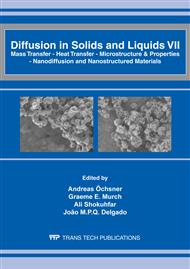p.330
p.335
p.341
p.348
p.354
p.360
p.366
p.372
p.377
Investigations on Tensile Properties of Waste Fillers Reinforced Composites
Abstract:
In this study, low density polyethylene (LDPE) matrix composites were manufactured with the ratios of 20%, 30% and 40%wt hazelnut and peanut reinforcements as the natural fibers. Composite plates were manufactured by using a single screw extruder. Various tests and measurements are performed to obtain mechanical properties such as density, tensile strength (TS), Youngs modulus (YM), failure strain (FS), impact strength (IS) etc. as well as the effect of maleic anhydride grafted resin as an additive with different ratios was investigated and the optimum composite content was obtained. This preliminary work showed that hazelnut and peanut fillers could be utilized with proper additives in order to produce the composite materials with good physical and mechanical properties.
Info:
Periodical:
Pages:
354-359
Citation:
Online since:
April 2012
Authors:
Keywords:
Price:
Сopyright:
© 2012 Trans Tech Publications Ltd. All Rights Reserved
Share:
Citation:


